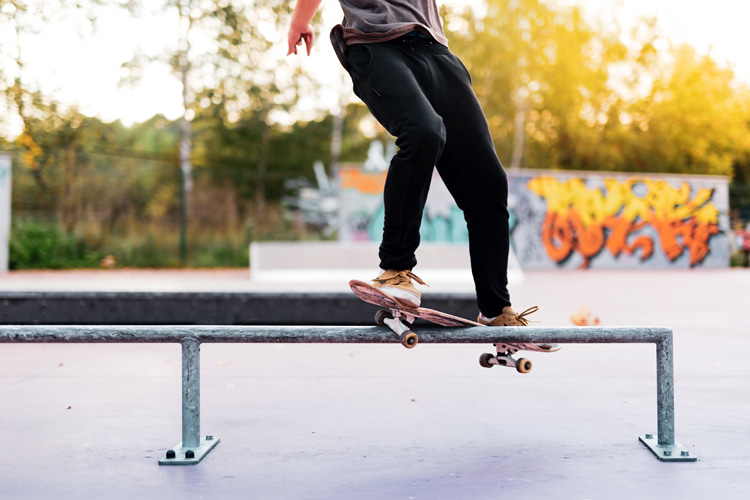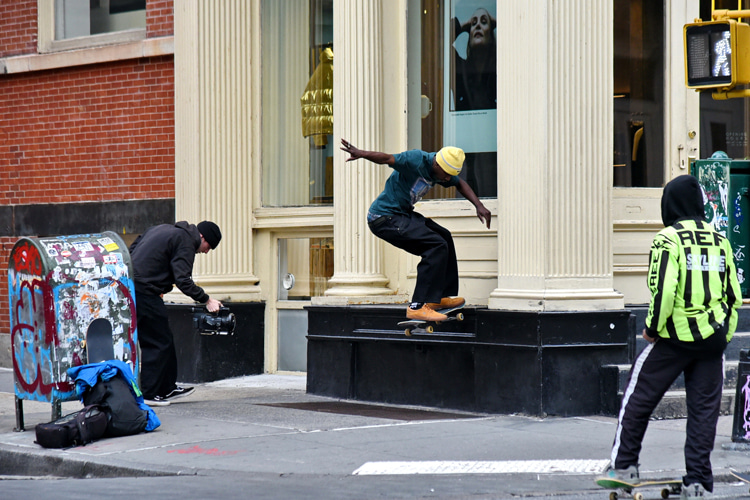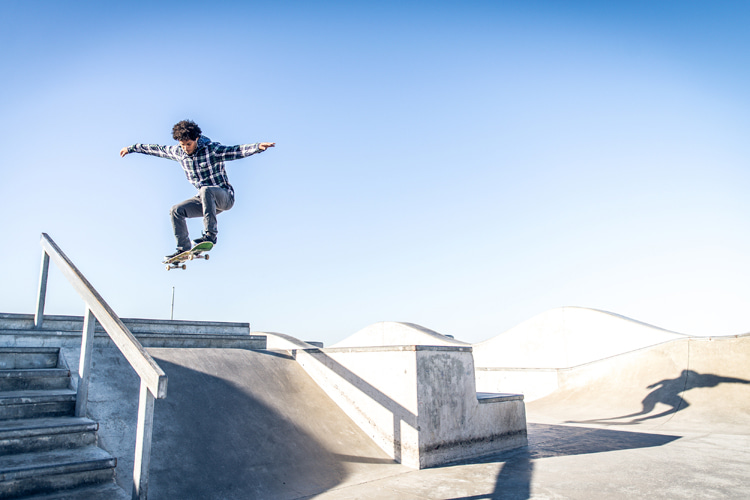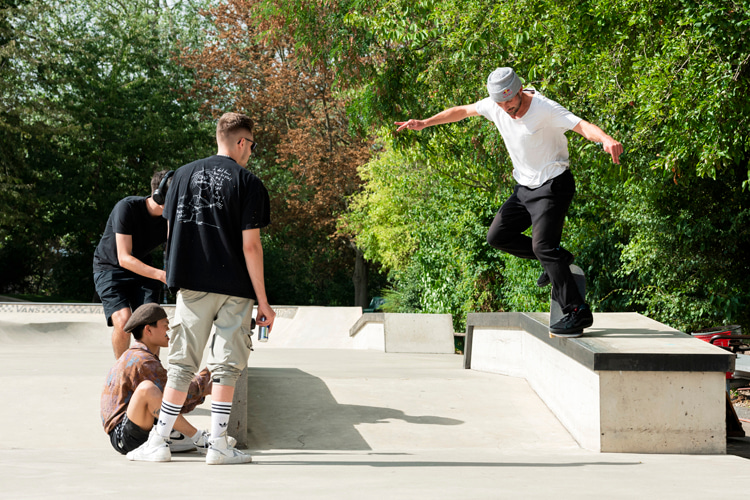Learn how to make a skateboarding video. Explore the fundamentals of follow filming lines and shooting single tricks clips.
Filming skateboarding video parts is not rocket science, but you can do a few things to raise the quality of the footage and the final product.
Practice will make your skate video parts increasingly good-looking. The more you shoot and learn from your mistakes, the better the outcome.
Shooting video is different from still photography, but if you're already an experienced photographer or a skilled lensman/lenswoman, you'll get it right in no time.
Skate videos are usually produced by skateboard companies, skate shops, independent skaters, and skate magazines to promote athletes and brands.
The goal of a skateboard video is to show and share uniqueness, style, technique, innovation, and, ultimately, new tricks.
In the YouTube era, regular video appearances or memorable lines can turn an amateur skateboarder into a professional star of the sport.
If your video part captures the attention of a global skate company, you might earn yourself a new sponsor.
But if you're only interested in documenting your runs, at least do it right.
"Skaterdater," the world's first skateboarding video, was shot in 1965.
Since then, nearly everything has changed - equipment, maneuvers, technology, skills, etc. Let's learn how to film a skate video.

Equipment and Filming Board
The first thing you'll need to have is the right equipment.
Ideally, you should get a DSLR camera, but if you're on a budget, use your smartphone or sports action camera.
If you're filming with a camcorder, turn off the steady shot.
You'll also need a filming board with soft wheels and a camera equipped with a fisheye lens.
With their extremely wide angles of view, fisheye lenses capture all the action and allow you to be closer to the skater.

Follow Filming Lines: Tips and Techniques
A steady hand is critical to get nice and clean tracking shots, but if the videographer also skates, the final result will definitely look even better.
Also, when you're pushing behind your subject, make sure to push as smoothly as possible and avoid putting your back foot on your board.
Ideally, your back foot will be close to the ground to control speed when you need to. A comfortable push switch skill will do wonders, too.
A good solid push will help you feel confident holding your gear while skating and focusing on the subject.
You won't be able to pay much attention to your surroundings.
In the end, the idea is to get the least amount of unusable footage.
Start practicing by shooting easy lines just to get used to riding conditions.
Plan the ride with the skater. Determine where he or she will go, as well as the beginning, middle, and end of the clip.
You want to be in the right place at the right time and make sure all tricks and maneuvers are captured from the best angle.
At a given moment, you can be standing in a stationary position; in other situations, the videographer could be moving already.
"If you're both rolling together, to begin with, it's often good to get your speed up early so that you're not still pushing during the beginning of the line, and that way, you're cruising comfortably and just focusing on the filming at that point," notes skateboard cinematographer Mike Manzoori.
Add different perspectives to our future folder of editing options - think about panning up from the ground or down from the sky.
The more alternatives you have, the better for the editor to work with multiple cut points.
If you're filming a line that starts from a stationary position, practice the transition from the trick into the landing area and the beginning of a new line.
The videographer will need to keep up with the skater as he continues his run.
Also, be ready to anticipate changes in the speed and position that the skater might take so that you don't get left behind and avoid collisions.
Keeping a safe yet exciting distance between the filmmaker and the skater can be challenging but will come with practice.
A smooth and creative shot is always the ultimate goal when filming skate lines.
Shaking is sometimes unavoidable, especially when you're shooting fast lines.
The good news is that modern action cameras feature digital stabilizers that dramatically improve the quality and stability of the footage.
However, a little shaking can look good and emphasize the skateboarder's speed.

Shooting Tricks: Do's and Don'ts
Whenever shooting flatland tricks and ledges, adopt a low stance with the lens looking slightly up.
Nevertheless, there are no limits to the angles and perspectives you might add to your skateboard videos.
The main thing to have in mind is that a smooth stop is key to a good skateboard video part.
Whenever possible, pay attention to the skateboarder's stance. Try to always have him facing you.
You should only break this rule if the skater is riding switch, landing fakie or, for example, grinding ledges with high backgrounds like concrete benches.
And to make obstacles bigger than they are, don't forget to get lower to the ground and point your camera up.
If you want to make a trick look like it was performed faster, use the rule of thirds.
Start with the skater on one side of the screen and make sure the maneuver is performed when the skater is in the middle of the frame.
Finally, allow enough space for the skater to exit your shooting angle through the opposite side of the screen.
Following skaters all the time will make tricks look like they're slow, so mix it up a bit with static angles.
In a stair set scenario, make sure to tilt the camera down to show the length of the stairs.
Pay attention to the light conditions.
The sun can easily destroy a well-executed run, so make sure to avoid the shadows of your body and camera whenever possible.
Last but not least, always review your footage before calling off a session. You might need to repeat a line or a trick before passing on the footage to the film editor.
